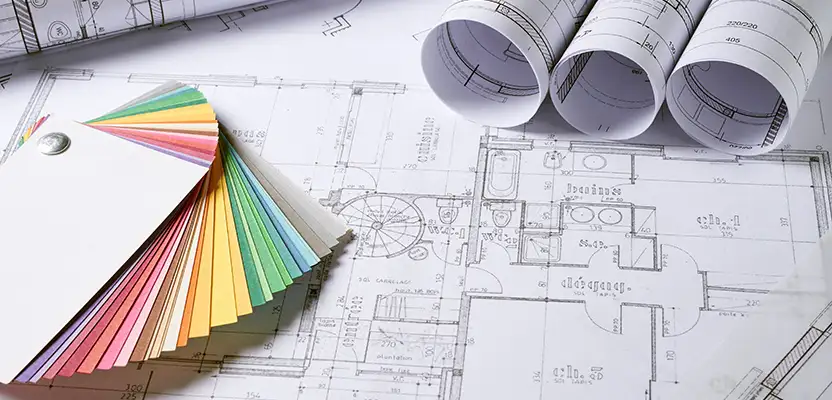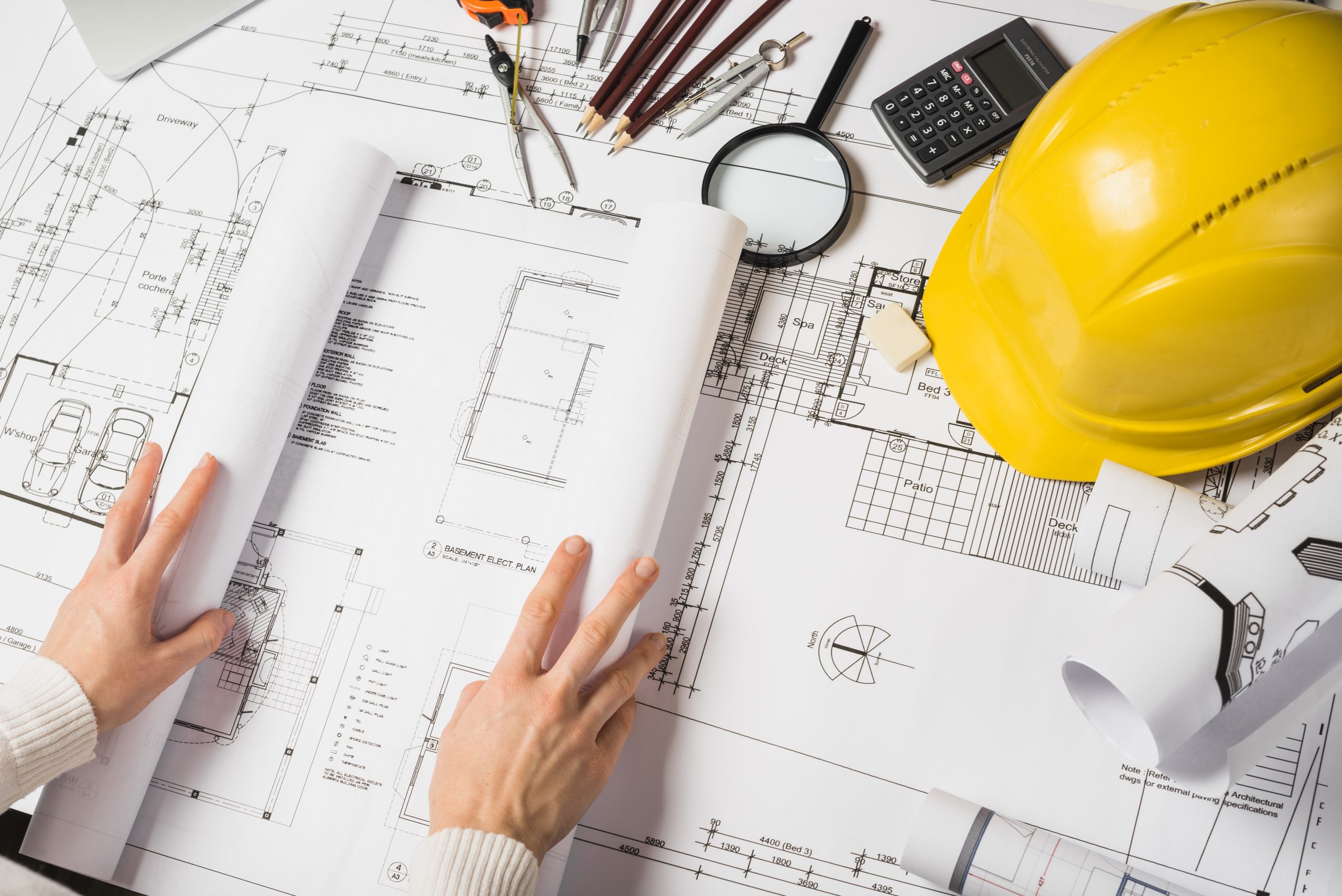Understanding the Diverse Career Paths Available for Aspiring Architect
As a hopeful Architect, you have a world of occupation courses waiting for you. Whether you're drawn to conventional design or the nuances of lasting design, there's a particular niche that aligns with your interests.
Typical Architecture: Designing Frameworks and structures
Traditional design focuses on developing buildings and structures that blend performance with aesthetic appeal. Your designs can mirror cultural heritage, showcasing local traditions while fulfilling modern-day demands.
You'll create abilities in composing, model-making, and site evaluation, permitting you to visualize and connect your concepts properly. Engaging with clients, you'll require to comprehend their vision and equate it into possible styles.
Additionally, building codes and sustainability techniques are essential in your work, ensuring your frameworks are risk-free and environmentally friendly. As you grow in your job, you'll discover opportunities in residential, business, or even remediation tasks, each offering one-of-a-kind obstacles. Accepting traditional design leads the way for a meeting occupation that admires the past while forming the future.
Urban Planning: Shaping Areas and Public Spaces
As a hopeful Architect, you can play a crucial duty as a metropolitan coordinator, transforming exactly how neighborhoods work and interact. By using neighborhood involvement techniques, you'll ensure that homeowners have a voice in shaping their setting. And also, integrating lasting design concepts will certainly assist create areas that not just meet today's requirements yet also secure the future.
Function of Urban Planners
While many may think of engineers as the sole enthusiasts behind structures, metropolitan organizers play a necessary duty fit the more comprehensive landscape of neighborhoods and public areas. They assess land use, zoning legislations, and area needs to produce lasting settings that boost lifestyle. By teaming up with various stakeholders, you'll assist create parks, transport systems, and suburbs that advertise social communication and accessibility. Urban coordinators likewise concentrate on environmental factors to consider, guaranteeing that advancements incorporate green spaces and support biodiversity. Your expertise in spatial layout and community dynamics enables you to imagine future development while maintaining social heritage. In this important function, you'll directly influence how people experience their surroundings, making every project an opportunity for favorable modification.
Neighborhood Involvement Methods
Efficient area interaction strategies are important for metropolitan coordinators to ensure that the voices of homeowners are heard and valued in the planning process. To promote purposeful dialogue, you ought to prioritize open online forums and workshops where neighborhood participants can share their concepts and concerns. By actively listening and incorporating responses, you'll produce areas that show the neighborhood's demands, ultimately leading to more successful and sustainable urban environments.
Lasting Layout Concepts
When designing urban spaces, incorporating lasting layout concepts is essential for creating environments that thrive both environmentally and socially. You need to start by focusing on power performance, utilizing products that lower waste and advertise recycling. Think about integrating eco-friendly spaces, like gardens and parks, to boost biodiversity and boost air high quality. Promoting walkability and public transport can lessen reliance on vehicles, promoting a healthier area.
Designing with water conservation in mind is likewise key-- assume about rain gardens and absorptive surfaces to handle stormwater. Involving neighborhood participants during the planning process warranties that the spaces you develop meet their needs and urge social interaction. By accepting these principles, you'll add to lively, sustainable city landscapes that benefit every person.

Landscape Architecture: Developing Sustainable Outdoor Settings
As you explore landscape architecture, you'll uncover necessary style concepts that develop functional and attractive outdoor areas. Lasting practices play an important duty in ensuring these environments flourish while decreasing environmental effect. Plus, you'll find a selection of profession chances that allow you to make an actual difference in how people connect with nature.
Style Principles in Landscape
Comprehending layout principles in landscape architecture is crucial for developing lasting exterior atmospheres that integrate with nature. You'll need to consider elements like scale, proportion, and balance to ensure your layouts really feel cohesive and inviting. Including native plants not just enhances biodiversity however also minimizes water usage, making your landscape durable. Assume about the flow of area and exactly how individuals communicate with it; pathways and seating areas need to welcome exploration and leisure. In addition, take note of seasonal changes, designing with products that match the environments year-round (Architect). By focusing on sustainability and looks, you can develop outside rooms that improve the area and advertise health. Welcoming these concepts will certainly establish a strong foundation for your job in landscape architecture.
Lasting Practices Introduction
Sustainable practices in landscape style not just concentrate on visual appeals but also focus on eco-friendly wellness and resource conservation. By incorporating native plants, you improve biodiversity and minimize the need for chemical plant foods and chemicals. Carrying out efficient irrigation systems helps preserve water and lessens runoff, shielding close-by communities. You can make areas that promote dirt health, such as using natural materials and exercising permaculture principles. In addition, incorporating green facilities, like rain yards and porous sidewalks, aids in stormwater monitoring and decreases metropolitan warmth. When you develop outdoor settings with sustainability in mind, you add to a healthier world and offer rooms that foster area link. Inevitably, these practices assure your designs benefit both individuals and the setting for many years to come.
Job Opportunities Expedition
With a solid foundation in lasting techniques, landscape style offers a variety of profession paths that enable you to make a purposeful effect on the environment. You could work as a landscape developer, developing cosmetically pleasing and useful outdoor rooms, or concentrate on ecological repair, assisting to restore damaged communities. Urban planners usually team up with landscape engineers to produce eco-friendly spaces in urban settings, boosting city livability. If you're enthusiastic regarding education, consider becoming a landscape architecture instructor, motivating future generations. Furthermore, you might function with nonprofits concentrated on ecological sustainability or take part in research to introduce new practices. Each path not just forms stunning settings however additionally promotes a much healthier world for future generations.
Sustainable Style: Concentrating On Eco-Friendly Practices
As you explore your job in design, accepting environment-friendly practices can establish you apart in an affordable field. Lasting design concentrates on creating buildings that lessen environmental effect while boosting resident wellness. By incorporating sustainable products, energy-efficient systems, and lasting building methods, you'll add to a greener future.
Start by acquiring expertise of green qualifications like LEED or BREEAM, which can reinforce your credentials. Take into consideration how natural light, ventilation, and thermal performance can enhance design. Collaborate with engineers and ecological specialists to introduce options that lower waste and save sources.
Do not forget the significance of neighborhood involvement-- engaging local stakeholders can inspire styles that balance with the atmosphere. As customers significantly prioritize sustainability, your experience in environmentally friendly methods will not only draw in jobs yet likewise meet your interest for liable style. Welcome this essential aspect of the profession, and watch your profession grow.
Historic Preservation: Safeguarding and Restoring Cultural Heritage
While you commence on your architectural trip, take into consideration the crucial duty of historical conservation in preserving our cultural heritage. This field concentrates on the defense and reconstruction of substantial structures, sites, and structures that inform the tales of our past. By participating in historical preservation, you'll help guard the additional resources building legacy that shapes area identification.
As a historic conservation Architect, you'll evaluate historic importance and assess the problem of structures. You'll function carefully with guardians and chroniclers to guarantee authentic repair methods are used. This profession path permits you to blend creativity with research study, enabling you to create solutions that value original products and craftsmanship.
Your work not only adds to sustainability by reusing existing structures but additionally fosters a sense of satisfaction within communities. Accepting this course will assist you come to be a guardian of history, protecting the tales and aesthetics that enhance our lives.
Inside Style: Enhancing Indoor Spaces
Historic conservation and interior design both share a dedication to boosting the built atmosphere, however they focus on different facets. While historical preservation highlights preserving a structure's historical and social worth, interior architecture nos in on enhancing indoor rooms for capability and aesthetics.
As a hopeful Architect, you'll discover that indoor style permits you to mix creative thinking with technological abilities. You'll develop areas that not only look excellent however likewise advertise convenience and effectiveness. This area includes comprehending how light, color, and materials connect within a space, affecting state of mind and functionality.
You'll work on different tasks, from residential homes to commercial offices, ensuring that each atmosphere satisfies the demands of its residents. By focusing on user experience, you can transform insides right into practical and inspiring rooms, making a substantial influence on just how individuals interact with their surroundings. Welcome the opportunity to enhance indoor environments and form the means people work and live.
Industrial Style: Combining Functionality With Visual Appeals
Industrial design plays a vital function in developing products that perfectly blend aesthetics with capability, ensuring that what you utilize day-to-day is not only visually attractive however also practical. As an aspiring Architect, you might immerse on your own in this area, concentrating on developing whatever from furnishings to customer electronic devices. Your job involves recognizing customer requirements, materials, and producing processes, allowing you to create cutting-edge solutions that boost day-to-day experiences.
In industrial style, you'll often work together with marketers, manufacturers, and designers, making certain that your layouts are not just stunning however also possible. This job path offers a vibrant environment where creativity satisfies functionality, making it a gratifying option for designers interested in forming the products of tomorrow.
Frequently Asked Questions
What Educational Credentials Do I Required to Become a Designer?
To end up being a designer, you'll need an expert level in architecture, normally a Bachelor's or Master's. In addition, you'll have to complete an internship and pass the Architect Enrollment Assessment to practice legally.
Exist Qualification Needs for Various Building Occupation Paths?
Yes, there're certification needs for various building courses. Architect. You'll need to pass exams, complete teaching fellowships, and often pursue specialized training, relying on your selected emphasis, like landscape architecture, metropolitan style, or historical preservation
What Software Program Skills Are Essential for Designers Today?

How Can I Gain Practical Experience While Researching Style?
You can get useful experience by interning at building firms, getting involved in style competitions, offering for community projects, or my explanation teaming up with classmates on read the full info here real-world jobs. These chances boost your skills and develop beneficial connections in the sector.
What Job Opportunities Exist Outdoors Standard Style Firms?
You can explore different task possibilities outside typical architecture firms, like metropolitan preparation, interior style, landscape design, building and construction administration, genuine estate advancement, and even roles in sustainability consulting. Each offers one-of-a-kind difficulties and rewards.
Whether you're drawn to typical style or the subtleties of sustainable layout, there's a particular niche that lines up with your interests.When creating urban rooms, including sustainable design principles is vital for producing settings that grow both ecologically and socially.As you explore landscape architecture, you'll discover vital style concepts that produce beautiful and functional exterior areas.Understanding style principles in landscape design is essential for creating sustainable exterior settings that harmonize with nature.In industrial layout, you'll usually work together with suppliers, engineers, and online marketers, making sure that your designs are not just lovely however likewise practical.